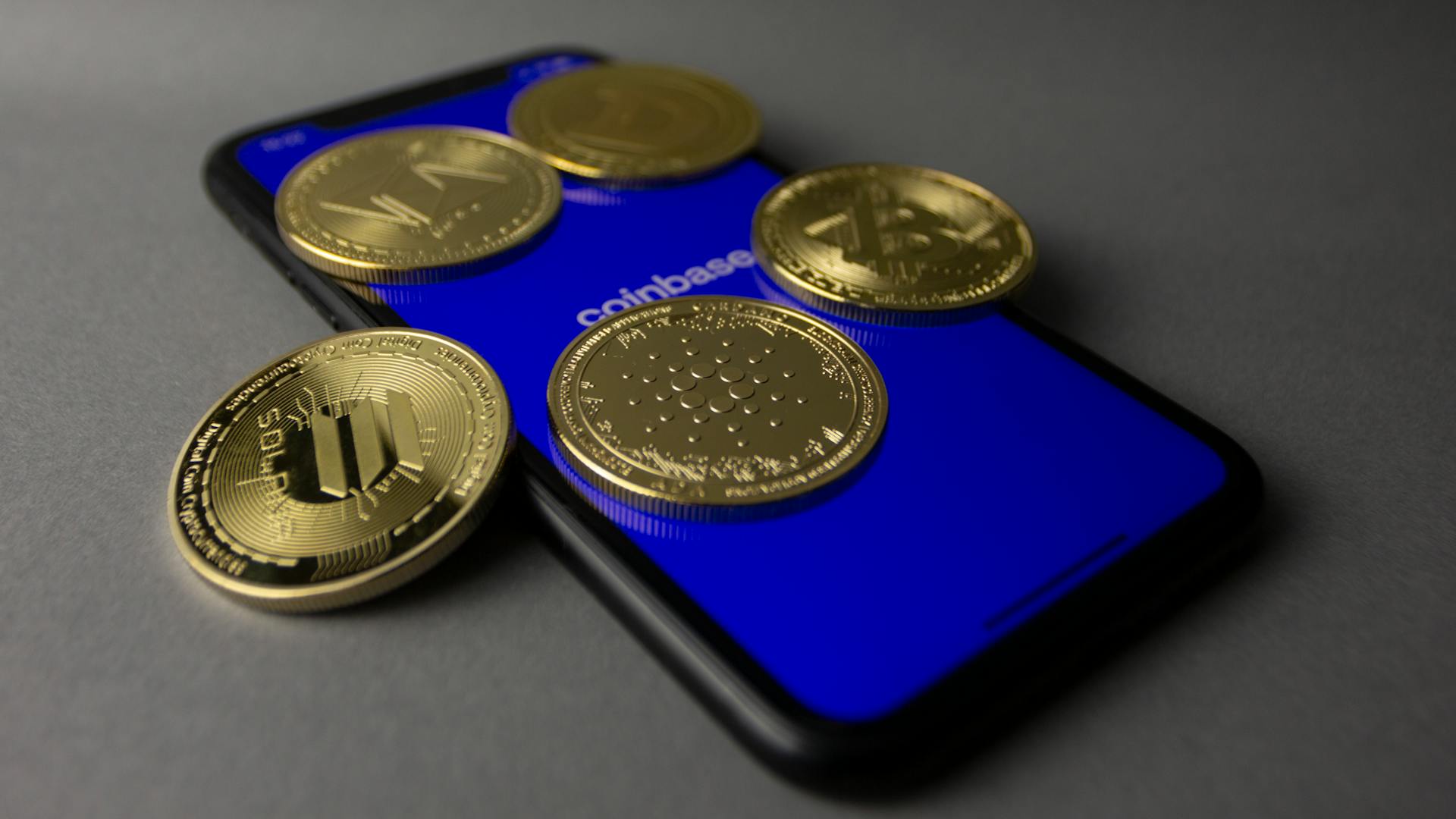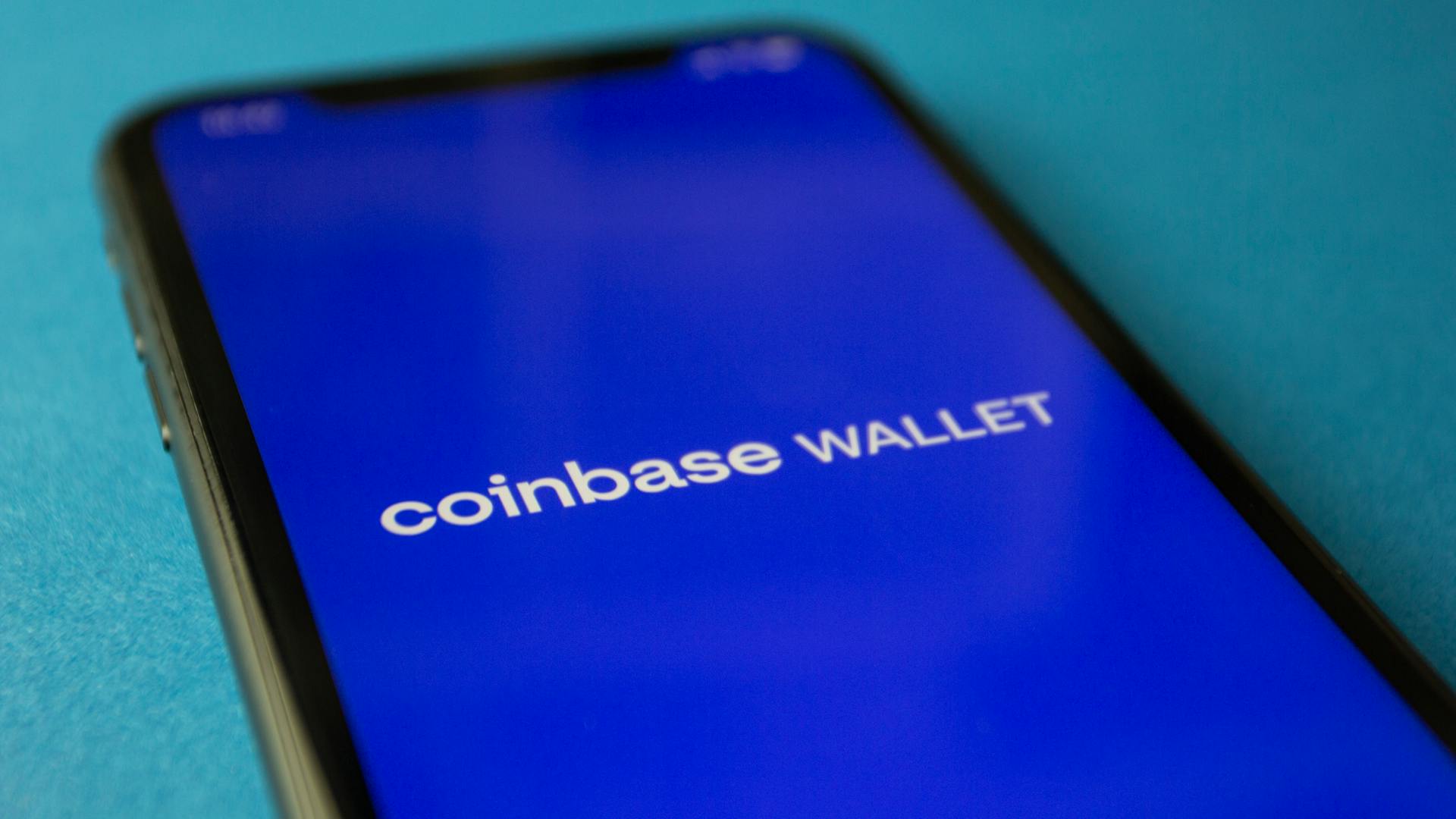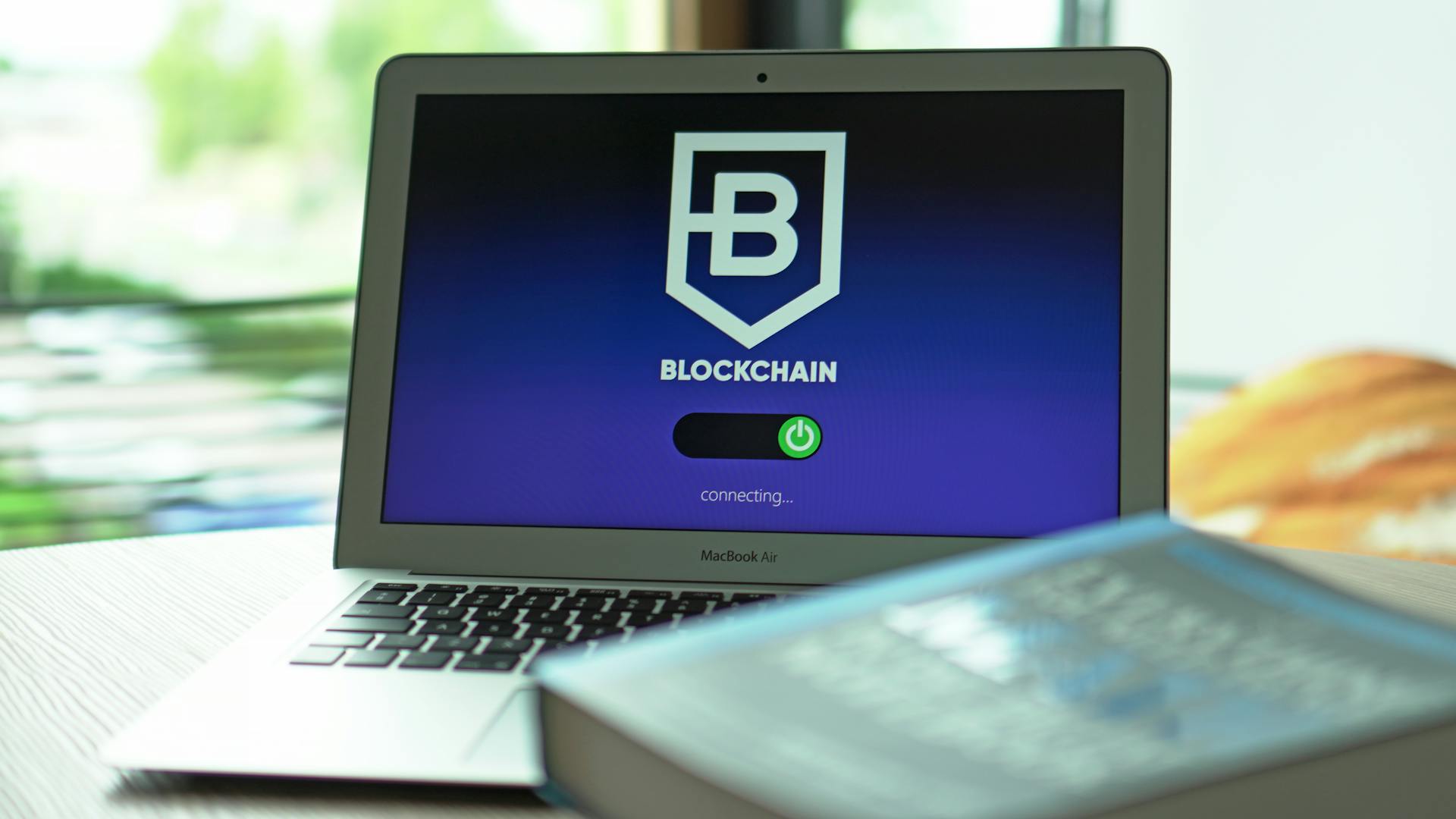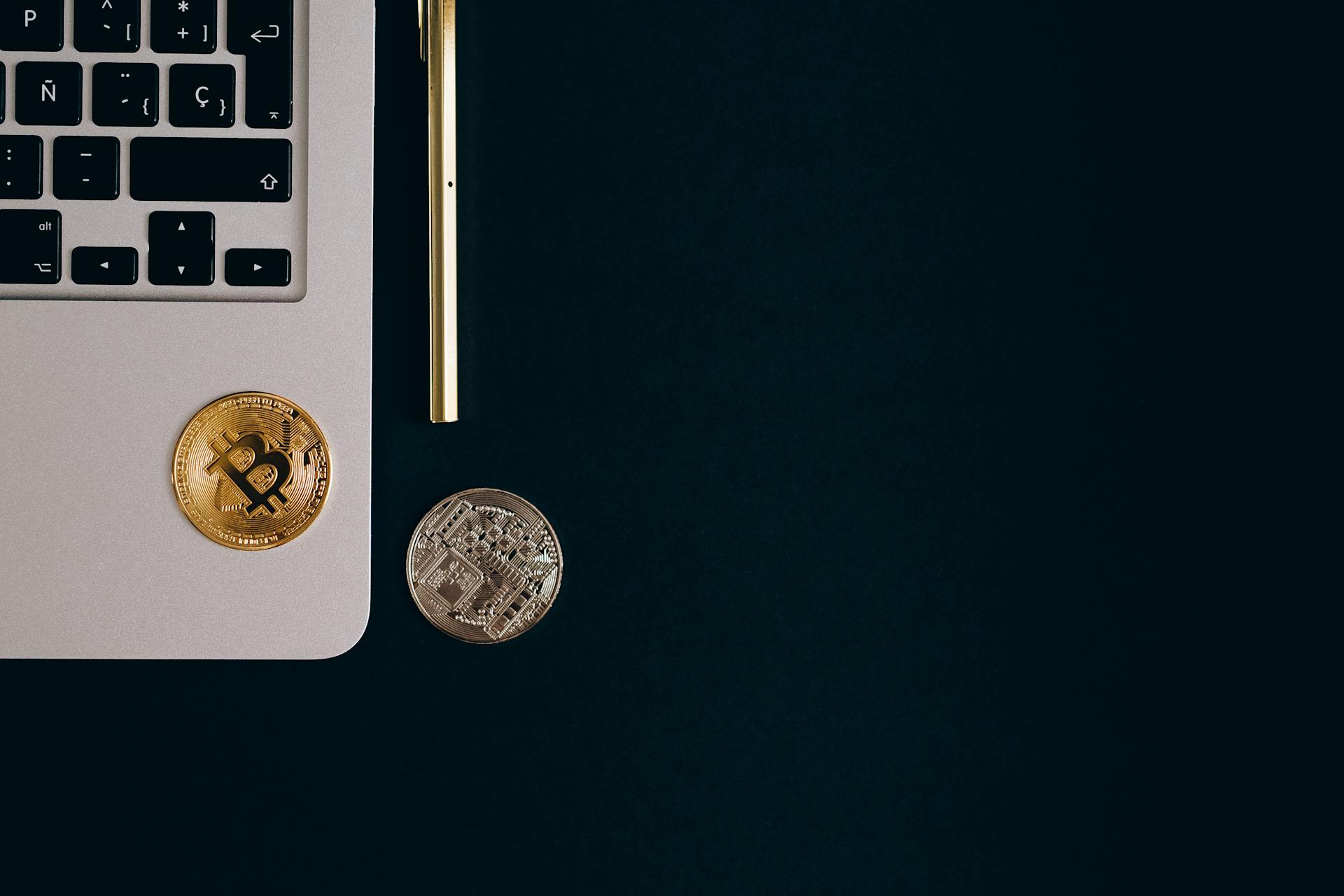
Cryptocurrencies are a high-risk, high-reward investment, but the risks can be mitigated with the right knowledge and precautions.
One of the most significant security risks is phishing scams, which can result in the loss of your cryptocurrency. According to a study, phishing attacks accounted for 70% of all cryptocurrency-related cybercrimes in 2020.
To avoid phishing scams, be cautious of unsolicited emails or messages that ask for your login credentials or private keys. Always verify the authenticity of the sender and be wary of generic greetings.
Cryptocurrency exchanges are also a common target for hackers, with many high-profile breaches occurring in recent years. In 2014, the Mt. Gox exchange was hacked, resulting in the loss of over 850,000 Bitcoins.
Intriguing read: Fbi Cryptocurrency Scams
Cryptocurrency Security Risks
Cryptocurrency security risks are a major concern for anyone looking to invest in or use digital currencies. Blockchains are decentralized ledgers that record transactions between devices or individuals, but they're not immune to threats.
Endpoint vulnerabilities, such as stolen smartphones and compromised apps, can expose authentication information and put client assets at risk. This is because users may store their private keys locally and fail to apply protective measures.
To mitigate this risk, do everything possible to prevent encryption key theft by encrypting devices that store keys and implementing rigorous physical security. This will make it much harder for hackers to access your private keys.
Poorly designed smart contracts can also put businesses at risk, making them vulnerable to attacks. Regular audits and secure development practices can help mitigate these risks.
Here are some key takeaways to keep in mind:
- Implement robust encryption and Identity and Access Management (IAM) solutions to secure your blockchain.
- Use multi-signature wallets and fail-safes to protect your assets.
- Regularly audit your blockchain and smart contracts to identify potential vulnerabilities.
Risks
Cryptocurrency exchanges are required to implement Know Your Customer (KYC) and Anti Money Laundering (AML) policies, which means they need to collect and store sensitive personal information, including full passport details with associated financial information.
This sensitive information makes data breaches for crypto exchanges a major incident, and it's a regulatory minefield that they need to navigate.
Additional reading: Information Security Risk Analyst
Users may store their private keys locally and fail to apply protective measures, making their devices vulnerable to theft and compromised apps can divulge authentication information.
Stolen smartphones and compromised apps can divulge authentication information, putting user assets at risk.
Some common blockchain security threats include man-in-the-middle, Sybil, and 51 attack types that exploit insecure nodes.
These threats can be mitigated by following blockchain security best practices, which include implementing robust encryption and Identity and Access Management (IAM) solutions.
Blockchains are also vulnerable to traditional phishing and endpoint vulnerabilities, which can be prevented by encrypting devices that store keys and implementing rigorous physical security.
Here are some common blockchain security risks:
By understanding these risks and taking steps to mitigate them, you can safely capitalize on blockchain technology and protect your assets.
Smart Contract Vulnerabilities
Smart contracts are a double-edged sword in the world of cryptocurrency, offering speed and security but also potential vulnerabilities.
Developers build smart contracts into blockchain operations, eliminating the need for intermediaries to verify credentials, but this code base can contain flaws.
These flaws can be exploited by hackers, as seen in 2021 when hackers extracted over $600 million from Poly Network by leveraging code flaws in smart contracts.
To avoid such risks, code audits are essential to verify every contract before use.
Explore further: How to Make Money with Smart Contracts
Types of Scams
Cryptocurrency scams come in many forms, and it's essential to be aware of them to protect yourself. Investment scams are a common type, where websites pose as investment platforms with fake charts to make users believe their initial cryptocurrency investment is growing.
These scams often use fake testimonials and grand promises of industry-disrupting cryptocurrencies, complete with a well-produced website and marketing strategy. Celebrities have even been known to participate in these scams, often unknowingly, by giving away worthless crypto tokens.
Pump and dump schemes are another type of scam, where scammers build convincing websites and marketing materials to present a bogus cryptocurrency as a solid investment. They convince more and more people to buy in, causing the price to increase, and then sell their tokens for traditional currency, leaving the victims with worthless cryptocurrency.
Here are some common types of crypto scams:
- Initial Coin Offering (ICO) Fraud and Investment Scams
- Pump and Dump Schemes
- Phishing
- Phishing attacks targeting private keys
Remember, it's always better to be safe than sorry when it comes to cryptocurrency investments. Always research thoroughly and be cautious of any investment opportunity that seems too good to be true.
Types
Initial Coin Offering (ICO) Fraud and Investment Scams are a type of scam where falsely advertised crypto investments are promoted with fake testimonials and grand promises of industry-disrupting cryptocurrencies.
These scams often come with a well-produced website and marketing strategy, only to have invested money disappear among the supposed "launch" of the currency.
Ponzi schemes of the digital currency era are also known in the community as a "rugpull".
Celebrities often unknowingly participate in these scams by doing giveaways for worthless crypto tokens, which is a criminal offense.
Pump and dump schemes can have a devastating effect, whether through an Initial Coin Offering (ICO) or via an existing coin. Scammers build convincing websites, marketing materials, and even security whitepapers to present a bogus cryptocurrency as a solid investment.
Fake coins and assets are also a problem, especially fake NFTs, being created and "gifted" to unsuspecting companies and users.
A Sybil Attack is a type of blockchain attack where a malicious actor controls multiple fake identities and tries to manipulate the communication in a P2P Cryptocurrency network.
Broaden your view: Cryptocurrency Investment Companies
In a DDOS Attack, a malicious actor aims to slow down or halt a digital currency network by overloading it with many transactions.
A 51% Attack occurs when one person or group controls more than half of the nodes on a blockchain network, allowing them to change transactions however they want.
Here are some common types of scams:
- Initial Coin Offering (ICO) Fraud and Investment Scams
- Pump and dump schemes
- Fake coins and assets
- Sybil attacks
- 51% attacks
- DDOS attacks
Phishing
Phishing is a type of scam that targets online wallets and exchanges, making them very attractive targets for hackers. These scams can be particularly sneaky, as transferring funds is as simple as entering a wallet address in a crypto exchange.
Online wallets are essentially digital bank accounts, and hackers often try to trick users into sending funds to the wrong address. This can happen when users copy-paste a wallet address from an email that might be from a fraudulent source.
Many services and exchanges offer address validator apps that are much safer than copy-pasting a wallet address directly. These apps can help prevent mistakes and keep your funds safe.
Intriguing read: Bitcoin Atm Milwaukee - Coinhub
Phishing attacks can also target the private keys used by blockchain participants, which are essentially passwords used as ciphers for private key hashes. This can give hackers access to your account and allow them to make transactions, extract information, and ruin the integrity of blockchain ledgers.
Improving employee security training is a key solution to preventing phishing attacks, especially when it comes to blockchain security issues. Every ledger user should know the risks of sharing their private keys and take steps to keep their accounts secure.
On a similar theme: What Is Ethereum Used for
Third Party and Supply Chain
Third Party and Supply Chain risks are a significant concern for businesses, especially crypto exchanges that rely on third party providers. This comes with associated supply chain risks.
Crypto exchanges hold sensitive PII for KYC purposes, making data exposure to external parties a major issue. They also rely heavily on inner workings of an exchange, which can be compromised by third party providers.
Managing data exposure to external parties is crucial for exchanges, as they can be vulnerable to third party risks. This is an important consideration for any business, especially those that handle sensitive information.
Worth a look: Security Risks
Common Scams
Cryptocurrency scams are a reality, and it's essential to be aware of the common types. Investment scams, for instance, involve websites posing as investment platforms with fake charts to deceive users into thinking their initial cryptocurrency investment is growing.
These scams often have fake testimonials and grand promises of industry-disrupting cryptocurrencies, complete with a well-produced website and marketing strategy. Unfortunately, any invested money will simply disappear among the supposed 'launch' of the currency.
Celebrities have also been known to participate in scams, often giving away worthless crypto tokens as part of a giveaway. This is a criminal offense, and many celebrities have been unaware of the scam's true nature.
Here are some common crypto scams to watch out for:
- Initial Coin Offering (ICO) Fraud and Investment Scams
- Rugpulls (Ponzi schemes of the digital currency era)
It's crucial to be cautious and do your research before investing in any cryptocurrency. A well-secured wallet and a solid understanding of cryptocurrency basics can also help protect you from these scams.
Protecting Yourself
To protect yourself from cryptocurrency scams, it's essential to pick one or two stable cryptocurrencies you're comfortable with and use a dedicated process to ensure funds spend as little time as possible on online exchanges and accounts.
Make sure to store your crypto in a password and 2FA-protected cold wallet, which can't be hacked remotely. A high-quality cold wallet that encrypts your keys is also crucial, making it harder or virtually impossible to break.
Here are some key takeaways to keep in mind:
- Use a recognized password manager to house your passwords and crypto keys.
- Turn on 2FA authentication, ideally connected to an authenticator app instead of text message authentication.
- Have backups of your cold wallet information and keys in case of theft.
By following these best practices, you can significantly reduce the risk of cryptocurrency scams and keep your funds safe.
Third-Party Risk Management
Third-Party Risk Management is crucial in today's digital landscape. Even if you don't use cryptocurrency in your business, you might still be exposed to its threats through a third party who does accept it.
Payments are a key aspect to add to your auditing of technology partners since they can have many cyber security vulnerabilities and devastating effects. This is especially true when it comes to custodial wallets, which are a common third-party risk management issue in regard to crypto.
Here's an interesting read: Bitcoin Atm Tampa - Coinhub
These wallets are generally safe for a short duration while your funds are transferred to a safer cold wallet. However, it's essential to keep in mind that using a third-party wallet adds another potential failure point in your payment supply chain.
To mitigate these risks, make sure to ask your technology partners about their payment security measures, especially if they use third-party wallets. This will help you identify potential vulnerabilities and take necessary steps to protect your business.
Here are some key questions to ask your technology partners:
- Do you use third-party wallets for cryptocurrency transactions?
- What security measures do you have in place to protect against cyber attacks?
- How do you ensure the integrity of your payment systems?
By being proactive and asking the right questions, you can reduce the risk of third-party vulnerabilities and protect your business from potential cyber threats.
Good Password Hygiene
Good password hygiene is crucial when it comes to protecting your cryptocurrency. Store your passwords and crypto keys in a recognized password manager.
Using a password manager helps keep your passwords organized and secure. This is especially important when dealing with large sums of money.
Turn on 2FA authentication to add an extra layer of security. Ideally, connect it to an authenticator app instead of text message authentication.
This will help prevent unauthorized access to your account. It's a simple step that can make a big difference in protecting your assets.
Protecting Yourself

To protect yourself from cryptocurrency scams, it's essential to choose a stable cryptocurrency with a solid blockchain and wide user adoption, like Bitcoin or Ethereum. Make sure you understand the risks involved and don't invest more than you can afford to lose.
Always keep your cryptocurrency in a password and 2FA-protected cold wallet, and never store it on an exchange or online account for an extended period. Cold wallets are essentially hard drives that can't connect to the internet, making them virtually unhackable.
Use a recognized password manager to house your passwords and crypto keys, and turn on 2FA authentication, ideally connected to an authenticator app instead of text message authentication. This will significantly reduce the risk of unauthorized access to your wallet.
It's also crucial to implement Identity and Access Management (IAM) solutions to control access to your blockchain network. IAM defines who can use private keys and change the blockchain ledger, blocking unauthorized users at the source.
Here's an interesting read: What Happens If a Cold Wallet Breaks

Consider using multi-signature wallets, which require more than one user to approve blockchain network operations, essentially a form of separation of duties. This adds an extra layer of security and prevents single users from making critical changes or diverting funds.
Regularly audit your blockchain network to detect emerging vulnerabilities, and use penetration testing to simulate real-world attacks and assess functional weaknesses. This will help you identify potential security risks and take corrective action before they become major issues.
To stay safe, it's also essential to train your users on cryptocurrency security best practices, including identifying phishing attacks and malware signs. This will help prevent human error from compromising your blockchain security.
In the event of a security incident, have a fail-safe plan in place to deal with it, including secure backups, key recovery systems, and incident recovery policies. This will help minimize the impact of a security breach and ensure business continuity.
Here are some key steps to protect yourself:
- Choose a stable cryptocurrency with a solid blockchain and wide user adoption.
- Keep your cryptocurrency in a password and 2FA-protected cold wallet.
- Use a recognized password manager and turn on 2FA authentication.
- Implement Identity and Access Management (IAM) solutions.
- Consider using multi-signature wallets.
- Regularly audit your blockchain network.
- Train your users on cryptocurrency security best practices.
- Have a fail-safe plan in place to deal with security incidents.
Sources
- https://portal.ct.gov/dob/consumer/consumer-education/cryptocurrency-risks
- https://www.micromindercs.com/blog/top-cryptocurrency-security-threats-and-how-to-mitigate-them
- https://www.terranovasecurity.com/blog/guide-to-cyber-security-in-cryptocurrency
- https://nordlayer.com/blog/blockchain-security-issues/
- https://www.securityhq.com/blog/cyber-security-in-the-age-of-digital-currency/
Featured Images: pexels.com


